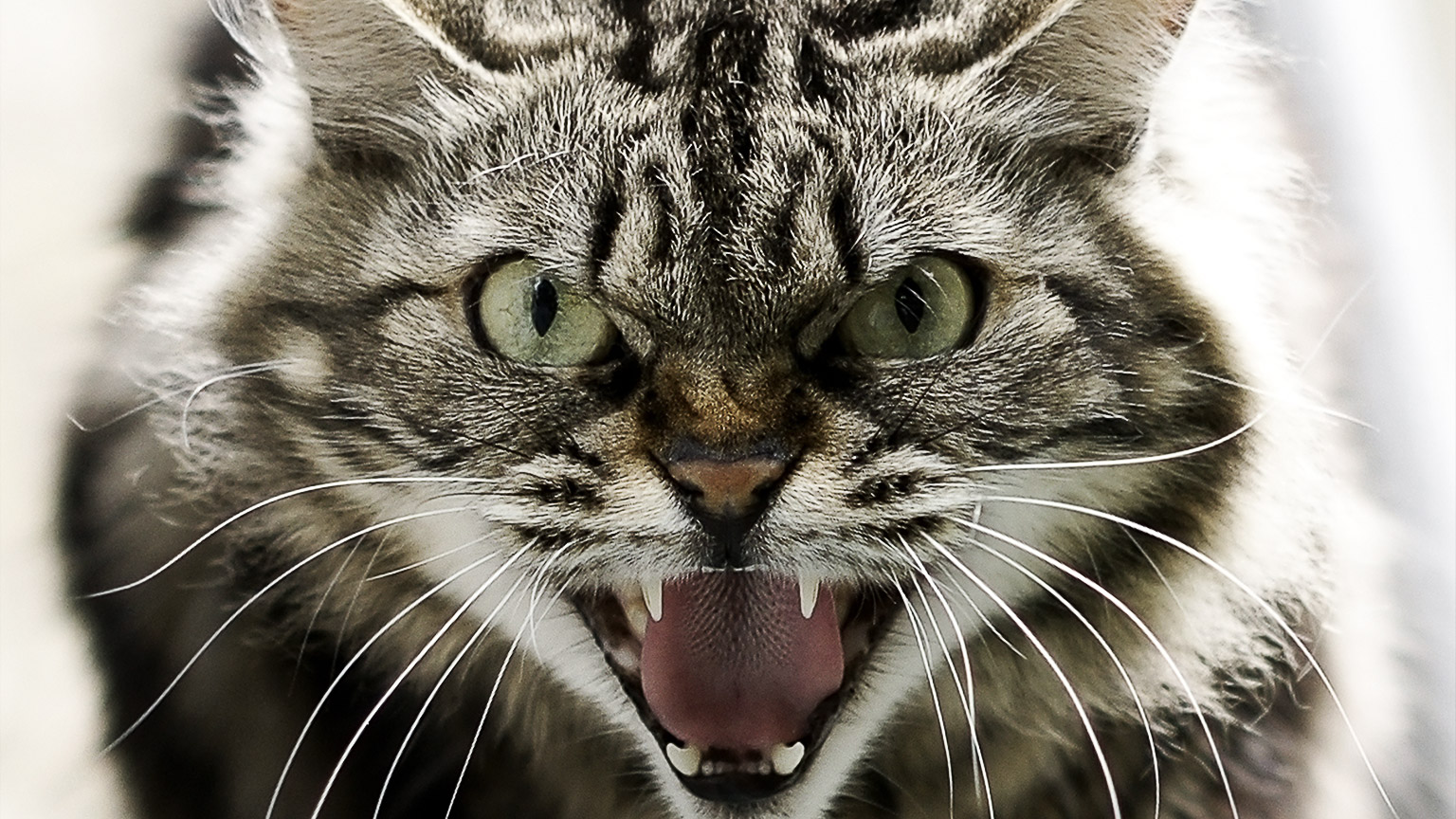How do I recognise signs of stress or illness in animals?
Animals exhibit many different types of behaviours, quite often these will be normal for that particular species or individual animal. However, the sudden onset of certain behaviours can indicate an underlying issue that may need to be treated. Remember animals may not behave in an unwell manner unless very sick, so subtle changes must be noted. This is due to a 'preservation instinct' to protect themselves. Ensure any unusual observations and followed up.
Any normal behaviours for that particular animal should be recorded on their cage card, sometimes animals just have strange habits which are not indicative of any serious issue. However, these behaviours should be observed by a trained professional like a veterinarian before being classified as harmless.
Observing animal behaviour often requires attention to detail, which comes with experience. When you are beginning your stages in the animal care industry, you will unknowingly learn the skill of observation as you may more than likely be working directly under the supervision of a veterinarian; the skills you will learn by observing the interactions, processes, and examinations
When to observe the animals

Regardless of whether an animal has been admitted for treatment overnight, residing in boarding while its owners are away, or you are working at a zoo, you will need to carry out routine observations.
When you start your shift, one of the first observations to carry out is a head count. Ensure you are aware of how many animals should be in an enclosure or crate and count to ensure there have been no escapes overnight- this is important when you are working in boarding kennels and zoos, as there are several animals that need to be accounted for.
If you are working in a veterinary clinic or hospital and an animal has required an overnight stay, you should ensure when you start your shift, you have carefully checked each animal in their crate. Depending on their condition, you will be able to monitor if they have improved overnight or if their condition has deteriorated.
During the day, you will also need to ensure you are monitoring the animals, especially if they are preparing for surgery or coming out of surgery along with any changes they may exhibit during the day.
When working in a zoo or boarding kennel, the behaviours of animals can help you determine whether they are potentially unwell, aggression and lethargy is usually a key indicator that something may be wrong with the animal.
What behaviours to look for
The behaviour of the animal refers to how the animal is acting around you or other animals. It is different from physical signs such as breathing or vomiting. It is always a challenge to determine the well-being of an animal and when they are not well if they could talk it would be a lot easier! Unfortunately, this is not the case and instead, you will need to use your observational skills to determine whether the animal is unwell.
Behavioural indicators you need to consider may include:
- aggression
- docility and/or lethargy
- self-mutilation
- trembling
- vocalizing
- nest building
- Inappetence
- destruction of bedding and other items
- Hiding
We will now look at each of these in further detail to help establish your understanding of the behaviours you will need to be mindful of.
Aggression is one of the key indicators in behaviour that may be present if an animal is unwell or injured. Aggression is defined as a threat or harmful action directed towards another animal or person. Actions may include:
- lunging / charging
- growling / snarling
- snapping / biting
- scratching
- kicking
- Power posture
- Raised or puffed fur/hair;
- extended or activated body parts which are normally relaxed (ie. the frills of a lizard); standing upright or crouching low to the ground.
Wild versus domestic
In the wild, aggressive behaviour is commonly used to protect the animal or their possessions such as their territory or their young. The animal will carry out this action through the display of power/strength in the face of danger. In animals such as wolves, they will stand guard over their young and bare their teeth, snarl and growl to warn off potential dangers.
In domestic animals, this instinct is still present and is often an indicator of fear or dominance over another animal. Some animals are always going to display elements of aggressive behaviour in certain circumstances, they may not be fully domesticated or tamed or they may be exhibiting a normal fear reaction from a larger animal/human. Where aggression may be a sign of illness or injury is when a normally happy, docile animal suddenly exhibits aggressive behaviour.
If the dog is showing signs of unusual aggressive behaviour, this needs to be reported to the supervisor or veterinarian and updated on their records with the date and a brief description of how the animal was behaving.

Docility is described as the act of being submissive and manageable or in the case of lethargy is described as, unusually sleepy.
It is important to understand, docility indicators can be challenging as many of these behaviours are noted as positive. But how to tell the difference?
Positive signs of docility may include:
- neither bossy nor shy.
- plays or interacts well with other animals of its species.
- doesn't fight (unless provoked).
- in domesticated/tamed animals, docility is demonstrated if they interact well with humans.
As a general rule, docility is a good trait in a domesticated animal. However, a sudden onset of docility in an animal that has not been undergoing training may be a sign of something being wrong and may be an indicator of illness, injury, or bullying.
The following are some of the indicators of unusual docility being coupled with:
- lethargy
- sleepiness
- submission
- disinterest in other people or animals.

These are important questions you can ask your client if they are calling to determine whether their animal is unwell. You will be able to share these observational descriptors with clients to help them observe their animal’s behaviour.
In the event, the dog is showing unusual or concerning signs of lethargy, this needs to be reported to the veterinarian or supervisor and documented on their records.
Self-grooming is a normal behaviour of most animals where they will lick and clean their coats. However, self- mutilation is different entirely. The following diagram illustrates the indicators of self-mutilation.
Self-mutilation can often be an indicator of:
- dermatitis
- food allergy
- infestations such as fleas or parasites
- fungal infections
- thyroid or kidney disorders
- anxiety
- lack of enrichment within their enclosure (ie. boredom).
The behaviour is quite common in dogs and also seen in cats and it can start innocently as a result of an injury or skin condition but may develop into an excessive action once the initial condition has healed.
Licking or chewing of inanimate objects may also be an indication of obsessive behaviour, for example, some dogs tend to lick floors and some horses may chew the walls/doors of their stable.
Trembling involves excessive shaking of the body. Trembling can be a sign of many different emotions and physical conditions such as:
- excitement
- pain
- old age
- dissatisfaction with containment
- nausea
- fear/anxiety
- shock
Some of the more serious conditions which exhibit trembling as a symptom include Distemper and Generalized Tremor Syndrome (in dogs); kidney disease or Hypoglycemia (in cats); Ingestion of poison; Shock. Ensure when excessive trembling is evident, the veterinarian is notified and the records are updated.
This is an animal’s way of communicating and is generally considered to be normal behaviour. However excessive vocalization or types of sounds may indicate a problem or specific condition. For example:
- sexual/mating rituals in an animal that has not been neutered
- issuing a warning signal to others of impending danger
- a vocal indication of pain/discomfort/dissatisfaction at containment
- seeking out members of its species, especially young offspring.
The following video outlines some of the cat vocalisations that you may hear and what each of them mean.
The nesting instinct is a natural urge for a pregnant animal to prepare a home for the impending arrival of the newborn/s. In these situations, it is completely normal behaviour. In some cases, normal nesting behaviours are undertaken by the male of the species, for example, male brush turkeys will build quite elaborate nests in the wild (and in some more urban environments) in anticipation of attracting a mate.
Nest-building becomes a behavioural concern is when it is occurring in a non-pregnancy or non-mating related situation. It can be a sign of false pregnancy in animals that are not neutered, or it can also indicate a hormonal disorder. In which case, this will need to be reported to the veterinarian or the supervisor.

